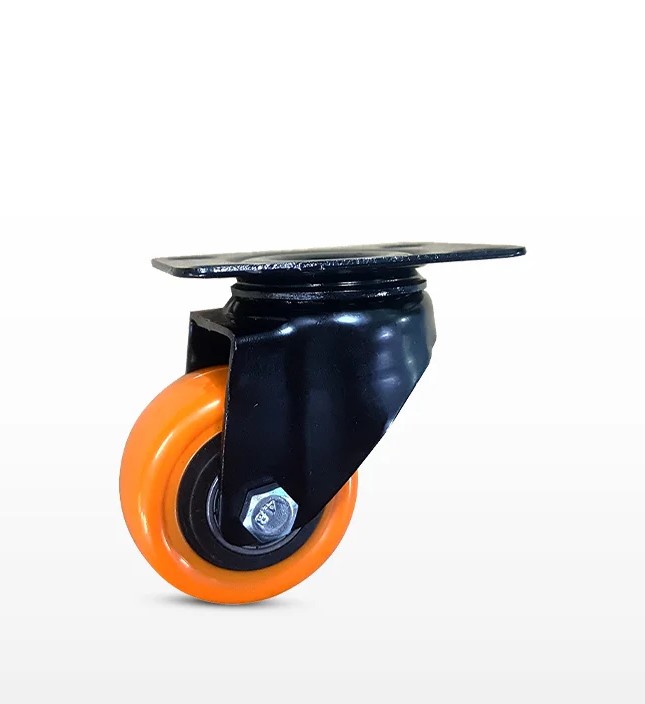Polyurethane Wheels are widely used in industrial, commercial, and material handling applications due to their durability, load-bearing capacity, and resistance to chemicals and abrasion. However, to ensure optimal performance and longevity, regular maintenance is essential. Proper care not only extends the life of Polyurethane Wheels but also enhances workplace safety and efficiency.
This blog explores essential maintenance practices, common causes of wear, and ways to maximize the lifespan of Polyurethane Wheels in various applications.
1. Understanding Polyurethane Wheel Wear and Tear
Before diving into maintenance strategies, it’s crucial to understand how Polyurethane Wheels degrade over time. Some common causes of wear and damage include:
- Overloading – Exceeding the wheel’s load capacity can cause premature deformation and cracking.
- Rough Surfaces – Continuous use on uneven or debris-filled floors accelerates wear.
- Chemical Exposure – Contact with harsh chemicals, oils, or solvents can weaken the wheel material.
- Improper Storage – Storing wheels in damp or extreme temperature conditions can degrade the polyurethane composition.
- Inadequate Lubrication – Friction between the wheel and axle can lead to overheating and material breakdown.
By identifying these factors early, businesses and individuals can take preventive measures to extend wheel longevity.
2. Regular Cleaning and Inspection
Routine cleaning and inspection are essential for maintaining Polyurethane Wheels and preventing potential damage.
Cleaning Guidelines:
- Use a mild detergent and water to remove dirt, dust, and grease buildup.
- Avoid harsh chemicals that can degrade polyurethane material.
- Use a soft brush or cloth to clean hard-to-reach areas.
- Dry the wheels thoroughly after cleaning to prevent moisture-related damage.
Inspection Checklist:
- Check for cracks, splits, or visible damage.
- Ensure the tread is intact and not worn down excessively.
- Examine wheel bearings and axles for rust or corrosion.
- Look for embedded debris that can affect wheel rotation.
Performing these checks regularly helps in identifying early signs of wear and addressing them before they lead to failure.
3. Proper Load Management
Overloading is one of the primary reasons Polyurethane Wheels wear out faster than expected. Every wheel is designed with a specific load capacity, and exceeding this limit can cause flattening, cracking, or even wheel failure.
Best Practices for Load Management:
- Distribute weight evenly across multiple wheels when carrying heavy loads.
- Choose wheels with a higher load rating for heavy-duty applications.
- Avoid sudden impacts and drops that put excessive pressure on the wheels.
Maintaining proper load limits helps preserve the wheel’s structural integrity and prevents costly replacements.
4. Lubrication and Bearing Maintenance
Wheel bearings play a critical role in ensuring smooth movement and reducing friction. Without proper lubrication, bearings can overheat, leading to premature failure of both the bearing and the wheel.
Lubrication Tips:
- Use high-quality grease designed for industrial applications.
- Apply lubrication at regular intervals, especially in high-use environments.
- Avoid over-lubrication, as excess grease can attract dust and dirt, leading to clogging.
Replacing worn-out bearings in a timely manner also helps maintain the efficiency of Polyurethane Wheels and reduces stress on the wheel material.
5. Floor Maintenance for Reduced Wear
The condition of the floor surface significantly impacts the longevity of Polyurethane Wheels. Rough, uneven, or debris-laden floors cause excessive friction and premature wear.
Floor Maintenance Tips:
- Keep warehouse and factory floors clean and free from debris.
- Repair cracks and uneven surfaces to minimize wheel impact.
- Use floor mats or protective coatings in high-traffic areas to reduce wear.
A well-maintained floor ensures a smoother rolling surface, reducing strain on Polyurethane Wheels.
6. Storage and Environmental Considerations
Proper storage conditions are essential to prevent unnecessary degradation of Polyurethane Wheels when not in use.
Storage Guidelines:
- Store wheels in a dry, cool environment away from direct sunlight.
- Avoid placing heavy objects on top of stored wheels to prevent deformation.
- Keep wheels away from harsh chemicals that could cause material breakdown.
Protecting wheels from extreme temperatures and humidity helps retain their original properties and ensures long-term usability.
7. Timely Replacement of Damaged Wheels
Despite proper maintenance, all Polyurethane Wheels eventually reach the end of their lifespan. Using worn-out or damaged wheels can lead to unsafe conditions, reduced efficiency, and potential equipment damage.
When to Replace:
- Deep cracks or significant material loss in the wheel tread.
- Frequent slipping or uneven rolling.
- Excessive noise or resistance during movement.
- Damaged or corroded wheel bearings.
Replacing wheels at the right time prevents operational disruptions and ensures smooth, safe movement.
8. Choosing the Right Polyurethane Wheels for Longevity
Selecting the right Polyurethane Wheels for specific applications is key to ensuring durability and performance. Factors to consider include:
- Load capacity – Choosing wheels rated for the required weight.
- Wheel hardness – Softer wheels for better grip, harder wheels for heavy loads.
- Bearing type – Precision bearings for smoother movement and less maintenance.
- Chemical resistance – Ensuring compatibility with warehouse or industrial environments.
By selecting high-quality Polyurethane Wheels that match the intended use, businesses can minimize maintenance requirements and extend wheel life.
Conclusion
Maintaining Polyurethane Wheels requires a combination of regular cleaning, proper load management, lubrication, and environmental care. By implementing these best practices, businesses can extend wheel lifespan, reduce replacement costs, and improve overall operational efficiency.
Investing in quality Polyurethane Wheels and following proper maintenance guidelines ensures optimal performance in material handling, logistics, and industrial applications. Whether in warehouses, factories, or commercial settings, well-maintained wheels contribute to smoother and safer operations.


